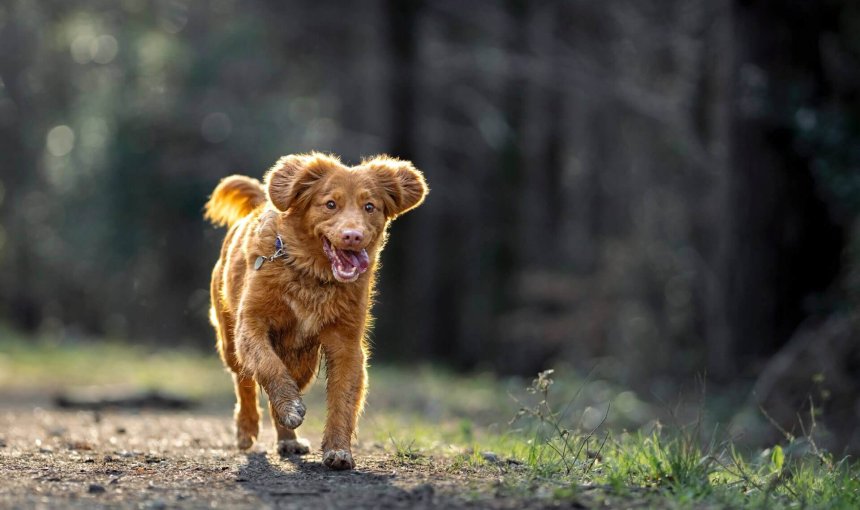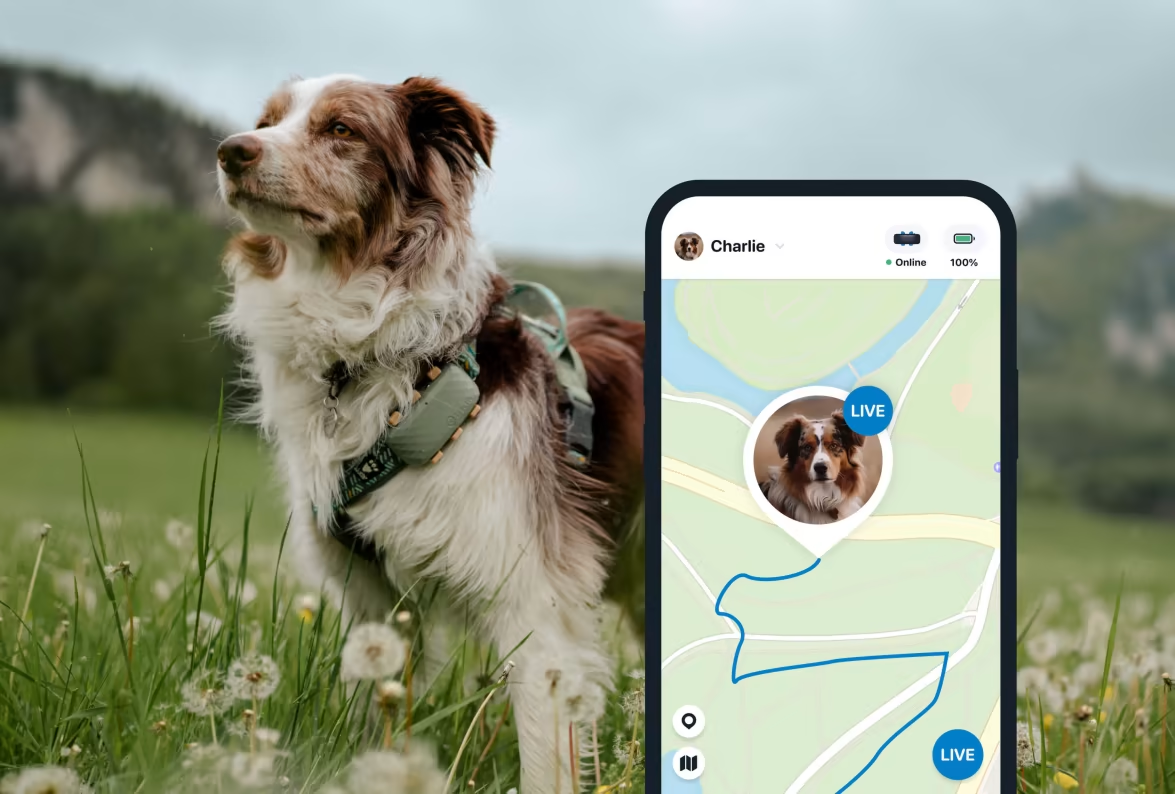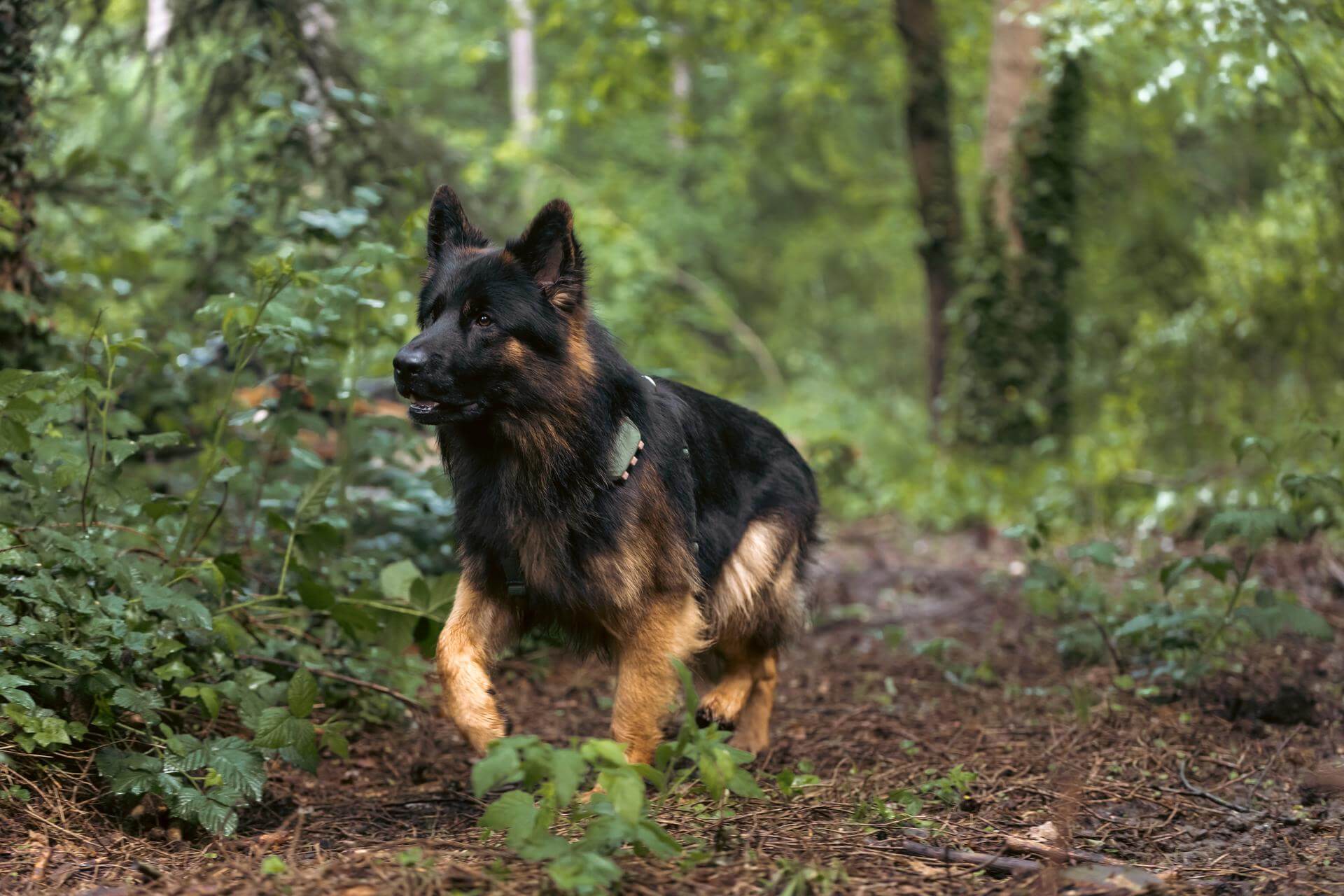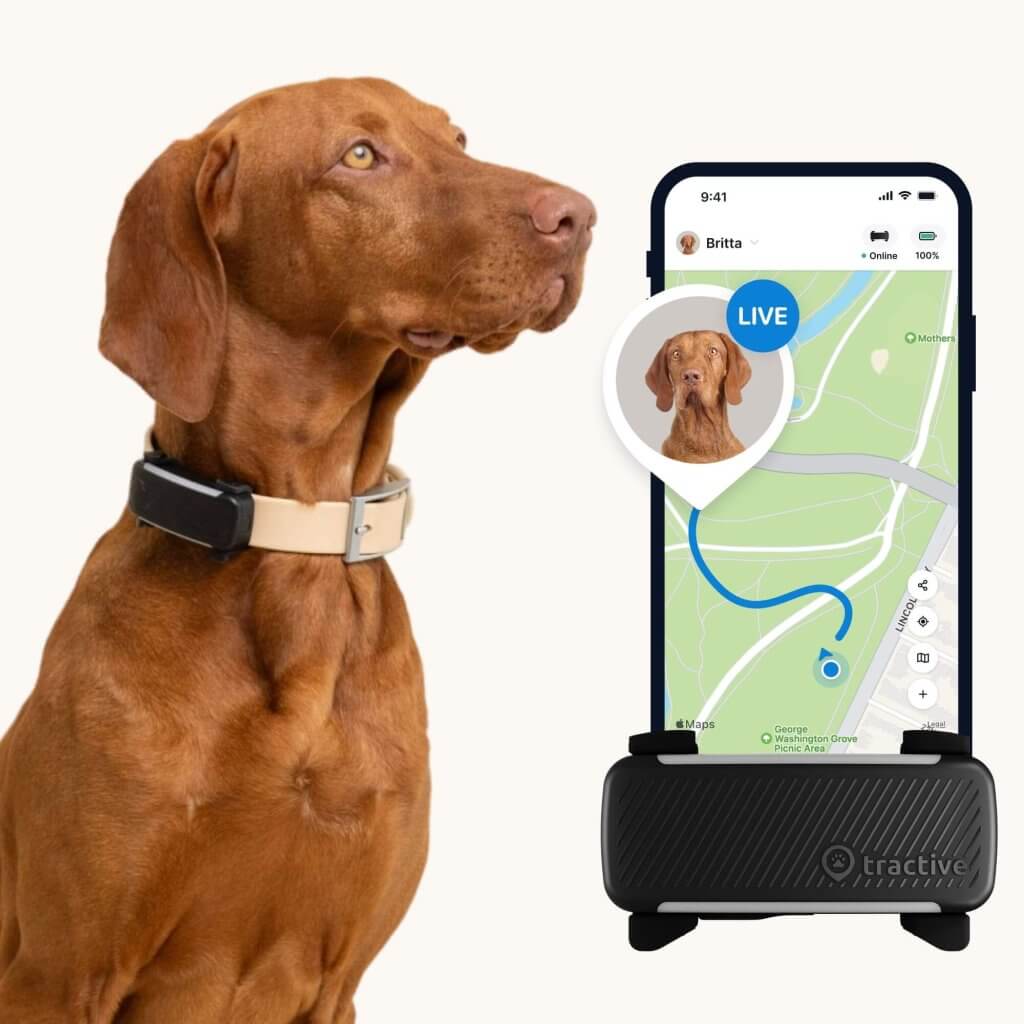The Complete Guide To Off Leash Dog Training
Going off leash can feel like a dream come true for dogs & dog parents alike. But there's a bit of homework you've gotta do before you get to off leash dog training. Start here.

Like us, our canine pals need some time to stretch their legs unrestricted, too. Which makes off leash dog training an important part of teaching them how to behave. (Where it’s legal, of course.) So in this guide, you’ll learn how to train your dog to go off leash, plus how to make sure your off leash adventures are safe for you and your dog, as well as everyone else you encounter. (Plus, where a smart dog tracker with real-time GPS tracking can be an important emergency measure.)
Key Takeaways
Off-leash dog training needs you to help your dog master basic obedience, recall, and impulse control. Don’t get started until you’re sure your dog is ready – and check your local leash laws.
Going off-leash means your dog might be at risk of running away, encountering hazards, or causing accidents.
If your dog runs off, stay calm, avoid chasing, use treats to entice them back, and consider a smart dog tracker with real-time GPS tracking for added safety during off-leash adventures.

Always know your buddy is healthy & safe
Read more- Key Takeaways
- What is off leash dog training?
- How to tell if your dog is ready for off leash
- Risks that might come with off leash dog training
- Why it’s important to consider your local leash laws
- Off leash dog training : How to get started
- What to do if your dog starts to run away
- Where a smart dog tracker can prevent an emergency
What is off leash dog training?
Your dog is off-leash anytime you unclip them from their tether. So like when you’re walking, hiking, camping, at a nature park, or other unfenced area. Off leash dog training is essential before you take your dog off-leash in any of these situations. It’s not the same as obedience skills, although basic obedience commands are the foundation of off leash training.
Best dog breeds to train off leash
Dogs that are bred for hunting, such as Retrievers and Spaniels, are often highly trainable. (So they’re more likely to have good recall.) This makes them good choices for off leash activities. If you plan to take your pup on wilderness hikes, camping, hunting, therapy, or other off leash pursuits, these breeds are potential off leash companions:
- Border Collie
- Labrador Retriever
- Golden Retriever
- Australian Shepherd
- German Shorthaired Pointers
On the other hand, dogs with a super-strong prey drive, such as Siberian Huskies, Shiba Inus, Rhodesian Ridgebacks, or Coonhounds may not be good candidates for off-leash activities. Likewise, dogs with aggressive tendencies may not have the right disposition for going off-leash. It doesn’t mean you can’t try, but depending on your dog’s personality, you may have your work cut out for you.
💡Besides working on your dog’s recall, a GPS tracker can be a potential lifesaver when you’ve let your dog off-leash. Just hit “LIVE” on your Tractive device – and follow your dog’s every step in real-time, even if they’ve disappeared into the undergrowth or distance.

How to tell if your dog is ready for off leash
Before you begin off leash training, ask yourself – does your dog:
- Respond well to basic obedience training?
- Have a good recall?
- Have good impulse control? For example, when they see a squirrel, can they resist the urge to chase after it?
- Interact well with strangers, including other dogs and small children?
- Gotten a microchip and is wearing an ID tag?
- Have their vaccinations and flea/tick prevention up to date?
- Are you familiar with the leash laws in your area?
- Is your dog already spayed/neutered? (The canine mating instinct can cause them to run off if they’ve sniffed out a female in heat.)
If you can answer and enthusiastic “YES!” to all of these questions, you and your dog may be ready to start off leash training.
Risks that might come with off leash dog training
If your dog has any history of running off – whether due to prey drive, still being in progress with their obedience training, or even out of boredom – going off-leash means you also need to plan ahead for an emergency.
Allowing your dog to run off leash increases the chance that they will run away. Your dog could get spooked by almost anything and suddenly bolt. Without a leash, you have only voice commands to stop or recall your pup. Your dog may encounter hazards such as getting hit by a car, tangling with other dogs or wildlife, getting lost, or ingesting something toxic.
A loose dog is also at risk of hurting people or animals. They might get into a fight with another dog, bite a person, or dash in front of a cyclist and cause an accident. Some people are afraid of dogs and will not appreciate being run at by your enthusiastic pup.
Why it’s important to consider your local leash laws
Many states have laws that prohibit dogs from roaming off-leash. A whole bunch of cities and towns have passed their own ordinances that may be more restrictive than state laws. These local laws may require that a dog must be “under control” – not specifically on a leash, but under the control of their pet parent. Some locations, such as city parks, may require that dogs be on a leash no longer than 6 feet long. Violators can be fined.
Likewise, some countries might not allow dogs to go off-leash, period. Others might go a step further: your dog might be required to wear both a leash AND a muzzle while, say, taking public transport. Make sure to check these before you head over for vacation with your dog in tow.
The bottom line is, laws differ from place to place. Know the leash laws in your area, or any place that you plan to visit with your pup.
Off leash dog training: How to get started
Start with training obedient behavior
Before beginning to train your dog to go off leash, your dog should be proficient in obeying basic commands. Mastering these behaviors can keep them out of precarious situations, like encounters with wild animals, chewing on roadkill, or walking on a pond covered with thin ice. Including:
- Sit – your dog stops what they are doing and sits, looking at you attentively
- Stay – your dog stays in place, even if there is chaos around them
- Down – you dog lays down at your feet
- Go – your dog moves to a specific place, like their bed or crate
- Heel – your dog walks beside you, not in front or behind you
- Recall – your dog comes to you when called
- Look – the dog looks at whatever you want them to look at, usually at you
- Drop it – your dog releases an object from their mouth
- Leave it – your dog walks away from an object or a chase
You can teach these behaviors with voice commands, but you can also incorporate hand signals, whistles, or use a clicker. Reward your pup with treats or a good ear rub to cement the learning process. Include a 10-minute training session in your dog’s daily routine to keep their training fresh.
If you have trouble training your pup at basic obedience, hire a professional dog trainer or research training videos online. Don’t start off leash training until your dog has mastered basic obedience. Your goal is to be a patient, calm, assertive leader that maintains control over your dog’s behavior, and can rein them in case something unexpected happens.
Motivate with treats
If you use treats for training, always bring some on your off leash outings. When your dog is close by and you need their attention, take a few out and hold them in your hand where the dog can see them. In case your pup is farther away, crinkle the bag and they’ll know right away that treats are an option.
Use a long leash
Before ditching the leash entirely, attach a long or retractable leash to your dog’s harness and head outdoors. The long leash will let your pup enjoy a bit of freedom. As your dog roams about, use basic commands to get your pup to heel, recall, or look at you. Do this repeatedly during your walks. Have treats ready in your pocket.
After a few outings on the long leash, assess whether your dog can be trusted to go fully off leash. If your pooch doesn’t acknowledge your commands because they are too wrapped up in exploring, you have more work to do before going off leash.
Test going off-leash in a safe place
If your pup seems ready to go off leash, practice in your backyard or a fenced location first. Unclip the leash, be confident and assertive, issue frequent commands, and reward your dog with lots of praise when they obey.
Repeat this exercise again the next day, but this time invite family members or friends to provide distraction. Again, focus on issuing commands and pay close attention to your pup. If all goes well after a few sessions, your dog may be ready for the real thing!
Emergency commands
Along with check-ins, practice emergency “Sit,” and “Down,” commands. Try these commands both when your dog is nearby and when they have run ahead. For example, if a horse and rider are approaching on the trail, recall your dog or tell them to “Sit” until the horse has passed or you arrive at their side. Don’t chase after your dog – they may get excited or run farther away.
What to do if your dog starts to run away
No amount of training can guarantee that your off-leash dog won’t run away. If this happens:
- Stay calm
Remember, you are the alpha dog. Remain calm and assert your leadership by calling to your pup in a firm, even tone. Try not to sound angry or fearful. - Don’t chase
This could backfire and make them think you want to play, so they’ll run faster. Face it, you will never catch them by running. Your best bet is to stick with what you’ve trained your dog to do – come back to you. - Use treats
Show your dog the treats from your pocket or rustle the bag to get their attention. - Turn away
Walk in the opposite direction while calling out your dogs name. They may get curious and trot over to see you.
Where a smart dog tracker can prevent an emergency
Even the most well-behaved pups can surprise us. One minute they’re by your side, the next they’ve caught a scent, spooked by a sudden noise, or spotted a squirrel with Olympic-level speed, and poof -they’re gone. That’s exactly where a smart dog tracker with real-time GPS tracking can turn a heart-stopping moment into a simple “Oops, there they are!”

Strapped to your dog’s collar, your trusty Tractive device now helps you:
- See exactly where your dog is, right now, on your phone
With LIVE tracking that updates their real-time position every couple of seconds. If they decide to take an unexpected detour, you’ll know their every move. Better yet, unlike an AirTag, you won’t be limited to a network of compatible devices or any range. - Get alerted if your dog escapes
From your app, you can set up “safe zones” around your yard or a specific area at the park. If your dog steps outside this invisible boundary, you’ll get an escape alert, giving you a head start to call them back.

- Figure out your dog’s favorite spots
From their Heat Map and Location History, where Tractive keeps a record of their past adventures. Now, in an emergency – like if they’ve gone missing – you’ll know where to look first. - Hike, run, or swim in the outdoors – 100% stress-free
Tractive trackers are durable and 100% waterproof, ready for muddy puddles, unexpected downpours, and whatever else your furry explorer gets into.

Follow your dog anywhere
Get real-time location information, wherever they go. And find out when they try to make an escape, or just when they go somewhere they shouldn’t, with Virtual Fences.
With some time, patience, basic commands, and a ton of treats – you’re that much closer to letting your dog let loose, build a lifelong bond of trust, and enjoy your outdoor adventures more. Just make sure to check your leash laws, start slow by using a long line and getting your dog used to quiet public spaces first – and you’ll be ready to nail your off leash dog training in no time.
Here’s a real-life review of why one dog parent has 100% peace of mind going off-leash with Tractive and why she recommends it for everyone with a dog:
Read more:



